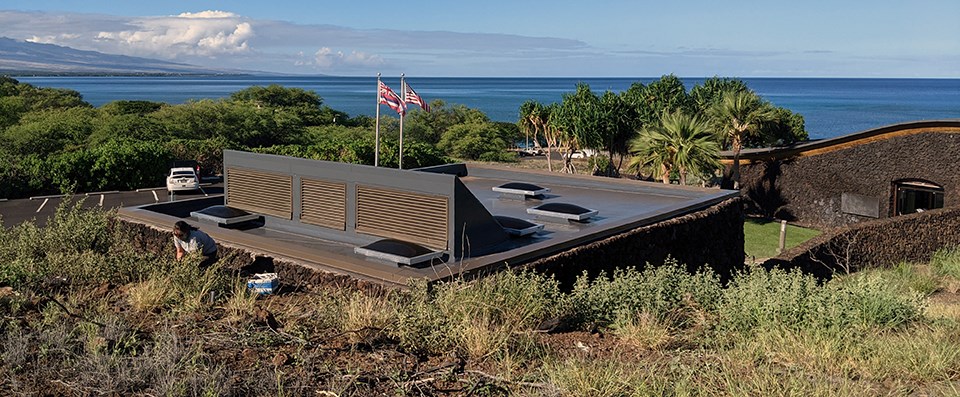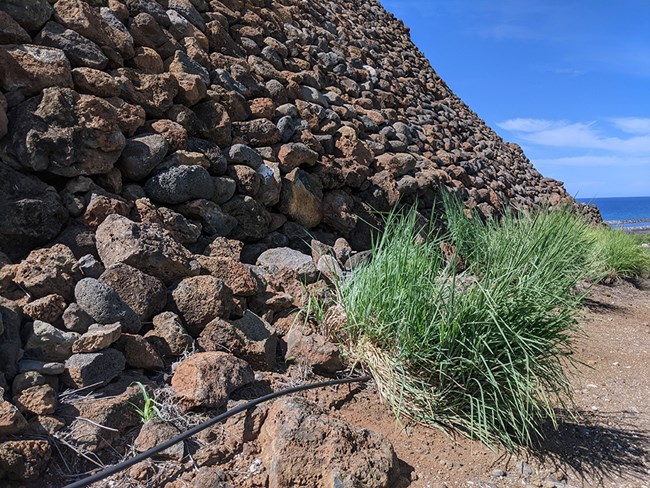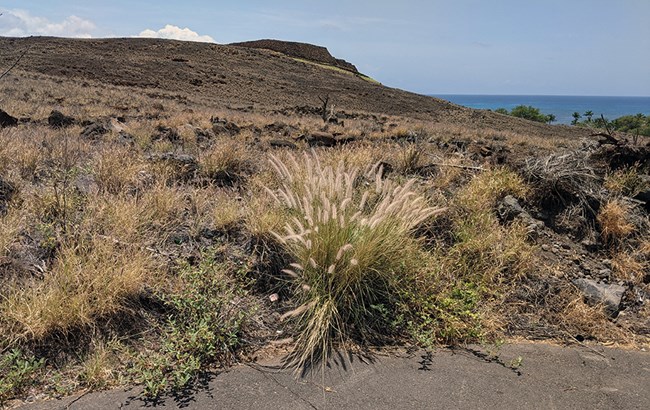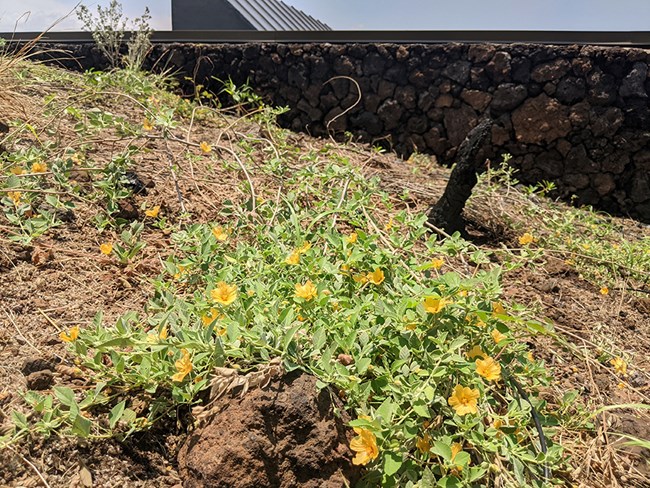Last updated: December 2, 2022
Article
Restoring native species post-fire at Pu’ukoholā Heiau National Historic Site

NPS / M WASSER
Following the 2020 Kalaupapa Fire at Puʻukoholā Heiau National Historic Site (PUHE), Burned Area Rehabilitation (BAR) enabled the park to take various efforts to repair damage including continued efforts of restoration of pili (Heteropogon contortus) – a native grass species important to the cultural landscape, controlling non-native species and rehabilitating interpretive landscaping with native species. The efforts focus on the use of native species because they promote diversity and reduce fire potential around critical infrastructure.

NPS / M WASSER
PUHE is an important site, rich in Hawaiian history. The park serves as a focal point for many cultural events with the local community. Traditionally used for thatching houses, pili is a pan-Pacific grass that continues to be a valued species in Hawai’i. It is also one of the few fire-adapted native species in Hawai‘i, and was the dominant vegetation on the landscape around the late 18th century when the heiau (temple) was built.
Through the BAR project, which expended around $34,800.00 in fiscal year 2022, over 500 pili plugs have been planted immediately around the base of the heiau by both park staff and community volunteers. These plantings enhance the cultural landscape of the park and restores the area closer to how it appeared during the late 18th and early 19th centuries. In addition, it also promotes fire resiliency and increases native species on the landscape.

NPS / M WASSER
In addition to the restoration of pili grass around the heiau, this project accomplished several other important goals. Three aggressive, non-native plant species, were removed. The plants were not yet well established, but if left to grow and become established, these species would radically alter fire danger on the landscape. Through BAR efforts, they will continue to be removed from the park.
Finally, the comfort station at PUHE suffered catastrophic damage during the Kalaupapa Fire. The structure suffered great damage in part due to nearby vegetation, which acted as a way for fire to enter the HVAC system of the building. As part of the rehabilitation of that area, the tall, flammable landscaping was replaced with low-growing, fire-resistant native plants adapted to the arid climate. Over 100 individual plants of four species were planted and will reduce fire potential around this critical infrastructure. The new plants will also enhance visitors’ educational experiences and provide opportunities for interpretation about native plant species from the area.

NPS / M WASSER
This rehabilitation project was truly a hui (group effort). Staff from several other NPS units on Hawaiʻi Island assisted with major aspects of this project and contributed labor. Community volunteers were essential to project success with their help planting. This project continues to strengthen PUHE’s ties with the local community.
